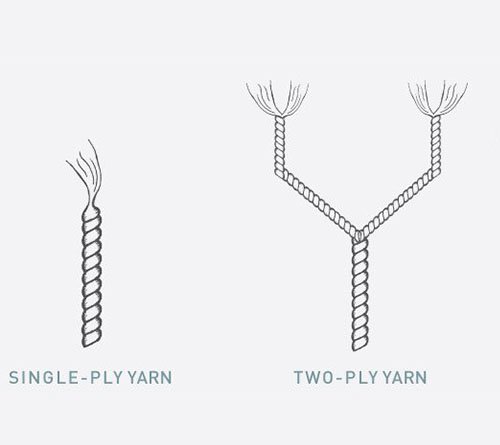Having over 90 years of experience in the trade, certain key concepts and terminology have become second nature to us. In order to equip you with the essential tools to make an informed decision while selecting fabrics from our extensive range, we have highlighted some key points below. You can always get in touch with us if you would like to know more.

Ply refers to the number of yarns twisted together to make a single thread.
Single ply means that a single yarn is made into a thread which in turn is used to weave the fabric. In two-ply (or double ply), two single yarns are twisted together to make the resulting thread that is woven into the fabric. This gives the resulting fabric more strength, durability, bounce and wrinkle resistance. Hence most formal shirts are preferred in 2-ply, since it inherently gives wrinkle-resistance properties to the fabric and prevents them from re-creasing once they have been ironed.
Two-ply 80s (represented as 2/80 or 80/2) means that two single 80s yarn are intertwined to give the resultant 2-ply 80s thread. (check). As a rule of thumb, this is equivalent in terms of thickness and feel to a singles 40s thread. Given what we have already learnt above about thread count, a 2/80s fabric is heavy and coarse compared to a 2/120s fabric, which is in turn equivalent to a single 60s (represented as 1/60 or 60/1). Basically dividing the number of ply with the yarn count gives the equivalent feel, thickness and fall of the fabric. Thus, if you know how a 70/1 fabric feels and falls, you can approximately tell how a 140/2 fabric will feel and fall (if all other things are kept the same).
A fabric can also be woven in a 2 by 1 configuration i.e with a two-ply warp and a single-ply weft. For example, in a 180/2 x 70/1 fabric, the 2 in 180/2 or the 1 in 70/1 refers to the ply of the fabric.